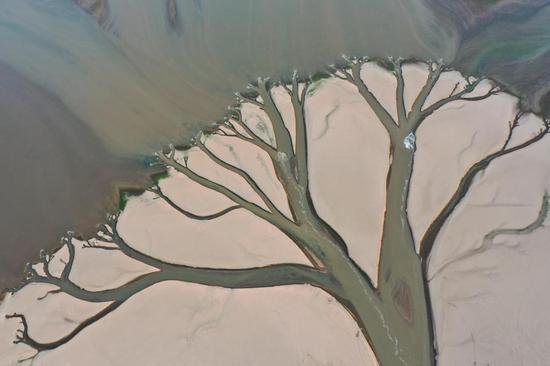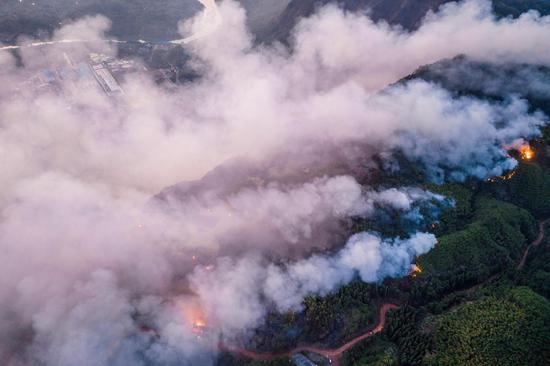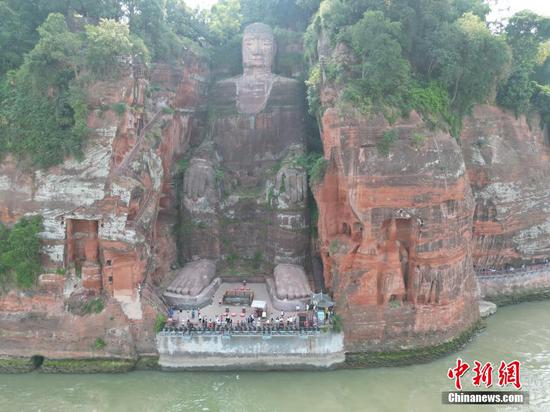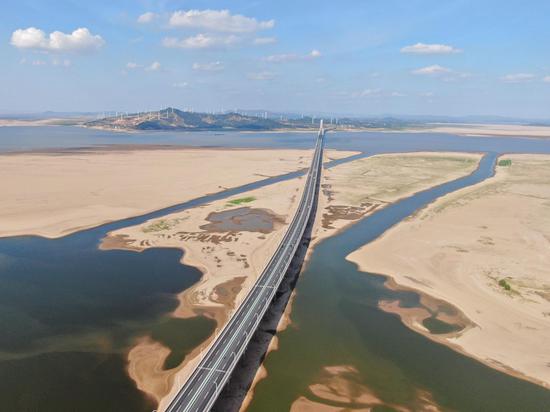Fact No. 4: It is the U.S. and the “Taiwan independence” separatist forces that are changing the status quo across the Taiwan Strait and stoking crisis.
The real status quo of the Taiwan Strait is this: there is only one China in the world; Taiwan is a part of China; and the Government of the People’s Republic of China is the sole legal government representing the whole of China. The two sides across the Taiwan Strait belong to the one and same China. The sovereignty and territory of China have never been divided.
The DPP authorities are inflicting change on the status quo of the Taiwan Strait: they stick to their separatist agenda for “Taiwan independence” and continue to make provocations. They incorporate “pursuing independence” into their party platform. They refuse to recognize the one-China principle, assert that Taiwan and the mainland should not be subordinate to each other, and proclaim a new “two states” theory. In Taiwan, they constantly press for “de-sinicization” and promote “incremental independence”. They incite radical separatists in and outside the DPP to lobby for amendments to their “constitution” and “laws”. They deceive the people of Taiwan, incite hostility against the mainland, and hinder the exchanges, cooperation and interconnected development across the Strait. They have steadily built up military forces in pursuit of “independence” and to obstruct reunification. They co-opt external forces to sow the seeds of “two Chinas” or “one China, one Taiwan”, going further down the path of seeking “Taiwan independence”.
The U.S. is changing the status quo of the Taiwan Strait by playing the “Taiwan card” to contain China, and supporting and conniving at “Taiwan independence” separatist forces.
The United States, betraying its pledge to maintain only unofficial relations with Taiwan, keeps raising the level of engagement with Taiwan, as evidenced by the successive visits or interactions by its Health and Human Services Secretary, Under Secretary of State and other senior officials, as well as the members of the U.S. Congress and its diplomatic envoys. In January 2021, then U.S. Secretary of State Mike Pompeo announced the lift of restrictions on its officials’ contacts with Taiwan. In April 2021, the U.S. Department of State issued new guidelines to encourage engagement between the U.S. officials with their so-called “Taiwan counterparts”. The visit by Pelosi, ranked the third in the U.S. government, to the Taiwan region has substantially upgraded U.S. official interactions with Taiwan.
In violation of its promise to gradually reduce its sale of arms to Taiwan, leading, over a period of time, to a final resolution, the U.S. continues to increase its arms sales to Taiwan, emboldening the “Taiwan independence” separatist activities. Despite “severing” its diplomatic relations with Taiwan authorities in 1979, the U.S. has upgraded non-stop the scale and performance of weaponry sold to Taiwan. Over the past 43 years, it has sold more than 70 billion U.S. dollars worth of arms to Taiwan. The Trump administration alone conducted arms sales to Taiwan 11 times in four years, nearing 20 billion U.S. dollars. The incumbent administration has approved arms sales to Taiwan five times, covering advanced equipment such as the Patriot missile defense system, self-propelled artillery, and ammunition supply vehicle.
The U.S. has continued to challenge the consensus of the international community by claiming that the status of Taiwan is yet to be determined. It keeps helping Taiwan expand its so-called international space. The U.S. clamored for Taiwan’s participation as an observer to the 75th World Health Assembly. It alleged that each country should be able to determine the contours of its own “one China” policy and encourages countries with “diplomatic relations” with Taiwan to maintain or even strengthen such relations. It must be pointed out that China’s Taiwan region’s participation in the activities of international organizations can only be handled in accordance with the one-China principle. This is an important principle enshrined in the UNGA Resolution 2758 and an international consensus that should not be manipulated.
The U.S. has been criticized by many at home for its position on the Taiwan question. At the World Economic Forum in Davos in May 2022, former U.S. Secretary of State Henry Kissinger underscored the imperative to keep to the one-China principle, and warned the United States against developing “something of a two-China solution” by subterfuge or a gradual process. Thomas Friedman, a seasoned American journalist and New York Times columnist, noted in an article on 1 August 2022 that if Pelosi goes ahead with a Taiwan visit, she will be doing something “utterly reckless, dangerous and irresponsible”, of which nothing good will come, and “Taiwan will not be more secure or more prosperous as a result of this purely symbolic visit.”
The one-China principle clearly defines the status quo of the Taiwan Strait. Any attempt to breach or challenge this principle is to change the status quo. The Chinese people have the firm resolve, strong will and enormous capability to defend national sovereignty and territorial integrity. China will work with the international community to resolutely uphold the one-China principle, and break the illusion of the DPP authorities to seek U.S. support for their independence agenda. Any attempt to use Taiwan to contain China will be thwarted.


















































 京公网安备 11010202009201号
京公网安备 11010202009201号